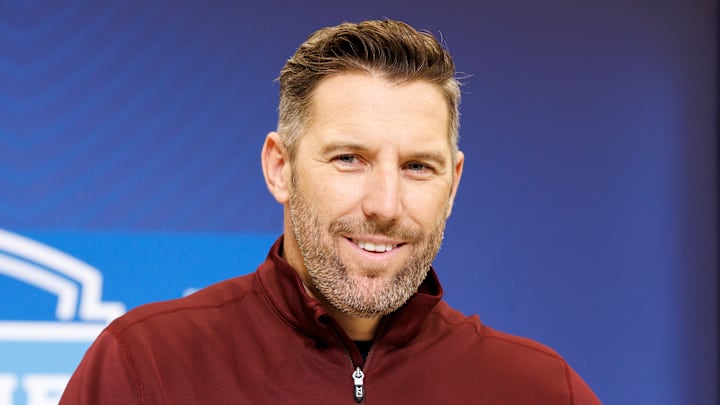Consider the following three scouting reports on recent NFL draft picks:
“(Player 1) is about as complete a package as you will see from an edge rusher coming out of college.”
“Many agree that (Player 2) is the best prospect at any position to declare for the NFL Draft since Andrew Luck in 2012.”
“(Player 3) is the consensus number one tackle in the 2022 NFL Draft and is viewed as an almost can’t-miss prospect by most scouts.”
The players referenced in the above quotes are Chase Young (the No. 2 pick in 2020), Trevor Lawrence (the No. 1 pick in 2021), and Evan Neal (the No. 7 pick in 2022). None have come close to their projections when they were selected as yet.
There is no sure-fire, one-size-fits-all strategy for approaching the draft. I don’t know for certain that the Washington Commanders should trade out of the No. 29 overall selection and pick up an extra pick or two in later rounds.
But I do know this much. Nothing is certain in the NFL Draft.
It is a mathematically provable fact that higher draft picks outperform lower draft picks. But the variation, especially when comparing selections that are close to each other, is not nearly as great as you might think.
The advantage is usually not as great as the advantage garnered from adding picks. In many ways, the draft is an actuarial table. Because it is such an inexact science, you need to have as many chances as possible to get it right.
That’s why good teams tend to trade back and acquire more assets instead of giving up picks to move up.
Of course, there are exceptions.
If you have a player targeted, you might decide it is worth the risk. That tends to work best when a team already has a complete roster and is the proverbial “one player away” from championship level.
Commanders must consider trading down from No. 29 after offseason trade activity
Despite their recent success, the Commanders might not be in that position. Besides, they have already made bold moves to add two vital pieces by trading draft picks for left tackle Laremy Tunsil and wide receiver Deebo Samuel Sr.
If they had a top-12 pick in this year’s draft, you could make the case that a player would be available who could make an immediate impact in 2025. But drafting at No. 29? Are the Commanders likely to get such a player?
Let's use the players taken around the No. 29 pick last year as an example: Darius Robinson (27), Xavier Worthy (28), Tyler Guyton (29), Nate Wiggins (30), and Ricky Pearsall (31).
Robinson and Pearsall had some bad luck with injury and, in the latter's case, a gunshot. Worthy was a pretty good weapon for the Kansas City Chiefs. Wiggins was a solid cornerback for the Baltimore Ravens. Guyton, the No. 29 pick, was forced to play too early with the Dallas Cowboys. He didn’t do very well, but the jury is still out on how good an offensive lineman he will be.
Now consider the players drafted ten spots later: Ja’Lynn Polk (37), T’Vondre Sweat (38), Braden Fiske (39), Cooper DeJean (40), and Kool-Aid McKinstry (41). You could make a pretty good case that those five players were better last year than the group drafted 10 spots ahead of them. Even if you don’t agree that they were better, the difference is minimal.
There is little historical difference between the No. 29 pick and the No. 39 selection in the NFL Draft. According to the commonly accepted value chart, moving from 29 to 39 should also return a late third-round pick.
Adam Peters has repeatedly said he wants to build through the draft. It is the tried-and-true method of creating long-term success. The fact that Washington is ahead of schedule right now caused him to veer away from that general philosophy in trading for Tunsil and Samuel.
Now he needs to begin restocking his draft picks. But it should not be a knee-jerk move.
If there is a player who Peters values highly when the Commanders are on the clock at No. 29, the front-office leader should take him. Barring that, he needs to trade down.
Maybe he just trades back a couple of spots and gains a sixth-rounder. Maybe it’s 10 spots and he gets a late third-rounder. Maybe he opts to take an extra high-value pick in the 2026 draft.
Whatever the move is, Peters has to do what all good general managers attempt. He needs to balance the short and long-term outlook of the Commanders. Nothing else will do.
Peters has already spent a lot of draft capital on the short term through a couple of trades. He needs to start addressing the long-term by seriously considering moving back.
